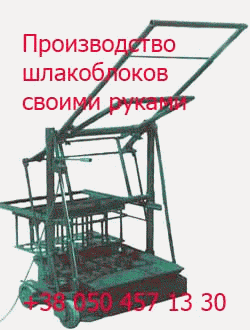Although, one-part systems are considerably easier to process than either two-part or multi-part adhesives, on most occasions it will be necessary to apply heat. One-part adhesives consist of low-molecular and plastified substances. In general, the base resins are phenolic resins, epoxy resins and, for the creation of high-temperature adhesives, polybenzimidazoles and polyimides. With regard to […]
Архивы рубрики ‘Adhesive Bonding’
Two-Part Adhesives
 27 августа, 2015
27 августа, 2015  Pokraskin
Pokraskin The most important adhesives of this group are polyester, cold-setting epoxy resins, polyurethanes and acrylic adhesives. Common two-part adhesives consist of several components that are mixed in a specific ratio before application. For acrylic adhesives of the ‘second generation’, it is possible to apply each of the components separately to one of the adherent surfaces, […]
Chemically Setting Adhesives
 26 августа, 2015
26 августа, 2015  Pokraskin
Pokraskin A wide array of chemically setting adhesives is available. Initially, there are low — molecular (and consequently flowable or low-viscosity) substances in which the reactive groups may react with each other under specific conditions (see Sections 5.4 to 5.8); this transforms the low-molecular systems into polymer substances with a high relative molecular mass and high […]
Hot-Melt Adhesives
 25 августа, 2015
25 августа, 2015  Pokraskin
Pokraskin Hot-melt adhesives, which are also physically setting adhesives, exist in a solid, high- molecular state and do not contain any solvents. They are applied in the molten state or as a powder or foil that is applied between the adherents and then melted under contact pressure and heat in order to obtain an appropriate wetting […]
Plastisol Adhesives
 25 августа, 2015
25 августа, 2015  Pokraskin
Pokraskin Plastisol adhesives, which have been used widely in the bodywork construction for automobiles, represent another group of physically setting adhesives. A plastisol adhesive is formed by the dispersion of a polymer, mostly polyvinyl chloride (PVC), in a plasticizer. During the curing process, when the dispersion is heated, the polymer dissolves irreversibly in the plasticizer that […]
Contact Adhesives
 25 августа, 2015
25 августа, 2015  Pokraskin
Pokraskin Contact adhesives are made from polymer components which are already in a high — molecular state, but which are not yet chemically crosslinked. By means of the addition of solvents, a low-viscosity state is obtained which allows the adhesive to wet the surface of the solid material. Contact adhesives must be applied to both adherents, […]
Physically Setting Adhesives
 25 августа, 2015
25 августа, 2015  Pokraskin
Pokraskin If the transition from the low-viscosity state (in which the adhesive is capable of wetting the adherent surface) to the solid state takes place by physical processes only (e. g. evaporation, solidification of the melt or diffusion processes) without chemically changing the polymer components of the adhesive, this is called ‘physical setting’. 4.2.1
Noncuring (Pressure-Sensitive) Adhesives
 24 августа, 2015
24 августа, 2015  Pokraskin
Pokraskin Extensive development has led to the successful use of permanently tacky, nonsetting pressure-sensitive adhesives in aircraft and bodywork construction, as well as in other fields [1]. Pressure-sensitive adhesives are high-viscosity polymer systems that at least partly retain the properties of a liquid in their final state. This allows them to Table 4.1 Classification of the […]
Survey and Classification of Adhesives and Primers
 24 августа, 2015
24 августа, 2015  Pokraskin
Pokraskin Although a systematic survey of available adhesives according to their properties, such as their technical performance and processability, would be greatly appreciated by potential users, this does not exist to date. While various attempts have been made to systemize adhesives, it is virtually impossible due to their nature. In contrast to other joining aids, such […]
Conclusions
 24 августа, 2015
24 августа, 2015  Pokraskin
Pokraskin Although, to date, the phenomenon of adhesion in bonded joints has not yet been completely explained by means of scientific concepts, our existing knowledge allows some simple conclusions to be drawn that are of considerable technical importance: • The wetting of adherent surfaces by the adhesive is an important — but insufficient — prerequisite for […]
 Опубликовано в рубрике
Опубликовано в рубрике 
